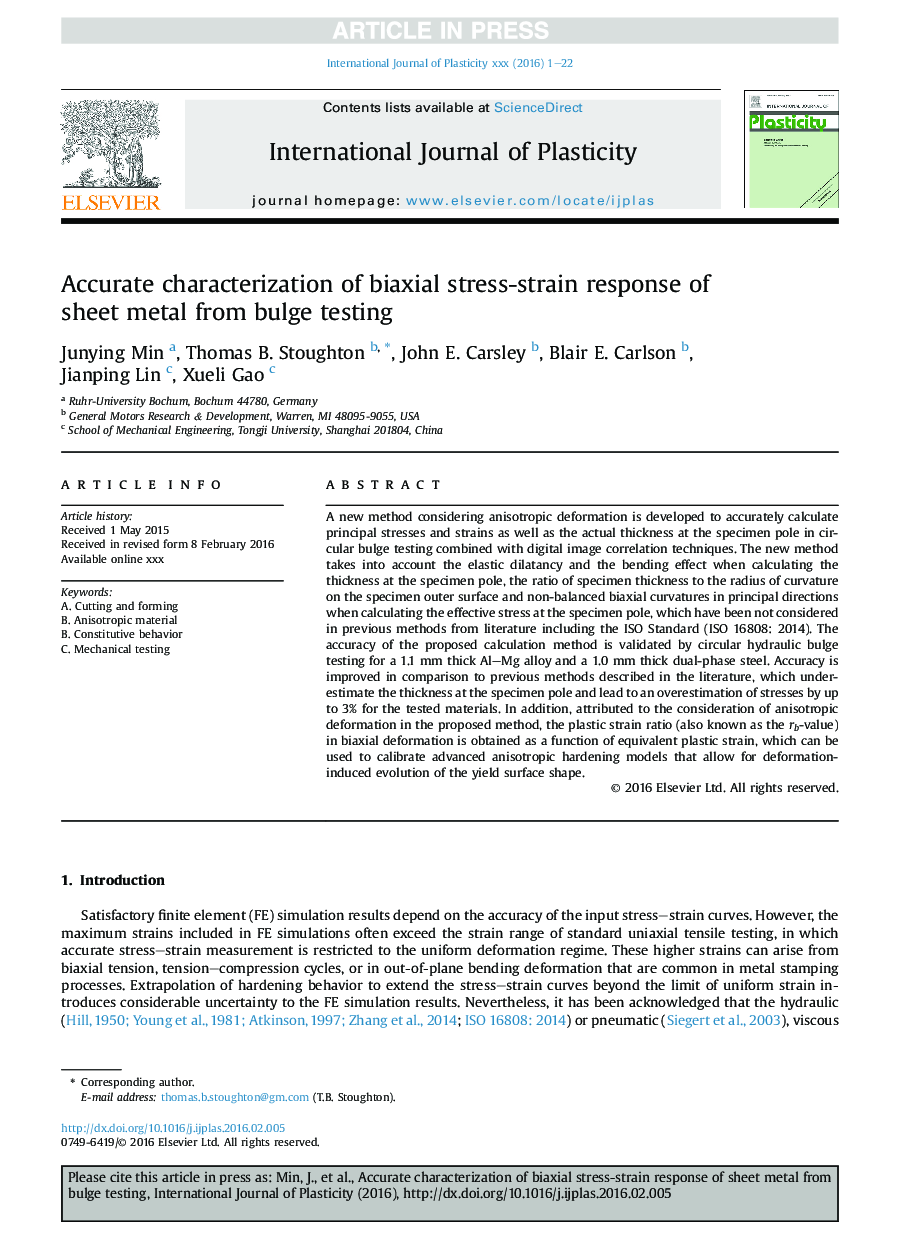| Article ID | Journal | Published Year | Pages | File Type |
|---|---|---|---|---|
| 5016661 | International Journal of Plasticity | 2017 | 22 Pages |
Abstract
A new method considering anisotropic deformation is developed to accurately calculate principal stresses and strains as well as the actual thickness at the specimen pole in circular bulge testing combined with digital image correlation techniques. The new method takes into account the elastic dilatancy and the bending effect when calculating the thickness at the specimen pole, the ratio of specimen thickness to the radius of curvature on the specimen outer surface and non-balanced biaxial curvatures in principal directions when calculating the effective stress at the specimen pole, which have been not considered in previous methods from literature including the ISO Standard (ISO 16808: 2014). The accuracy of the proposed calculation method is validated by circular hydraulic bulge testing for a 1.1Â mm thick Al-Mg alloy and a 1.0Â mm thick dual-phase steel. Accuracy is improved in comparison to previous methods described in the literature, which underestimate the thickness at the specimen pole and lead to an overestimation of stresses by up to 3% for the tested materials. In addition, attributed to the consideration of anisotropic deformation in the proposed method, the plastic strain ratio (also known as the rb-value) in biaxial deformation is obtained as a function of equivalent plastic strain, which can be used to calibrate advanced anisotropic hardening models that allow for deformation-induced evolution of the yield surface shape.
Related Topics
Physical Sciences and Engineering
Engineering
Mechanical Engineering
Authors
Junying Min, Thomas B. Stoughton, John E. Carsley, Blair E. Carlson, Jianping Lin, Xueli Gao,
